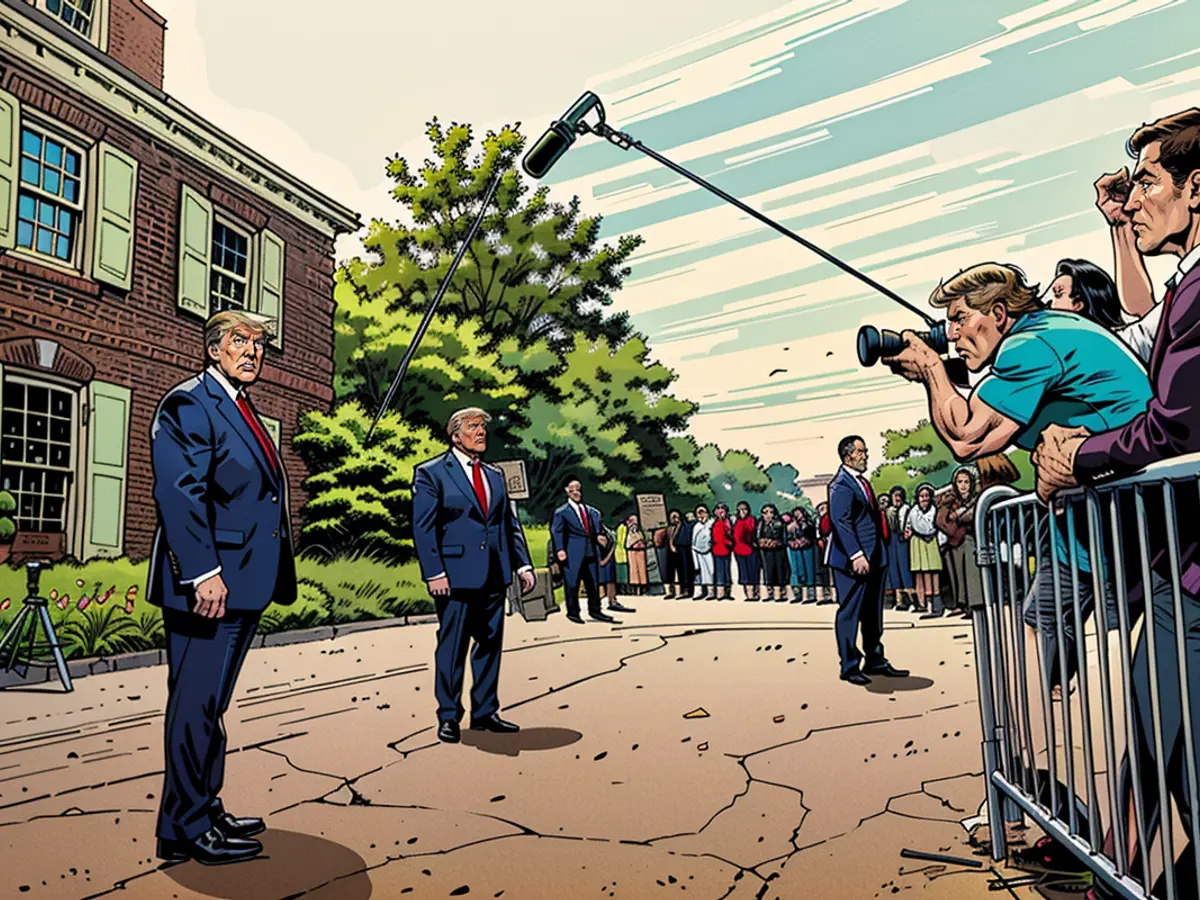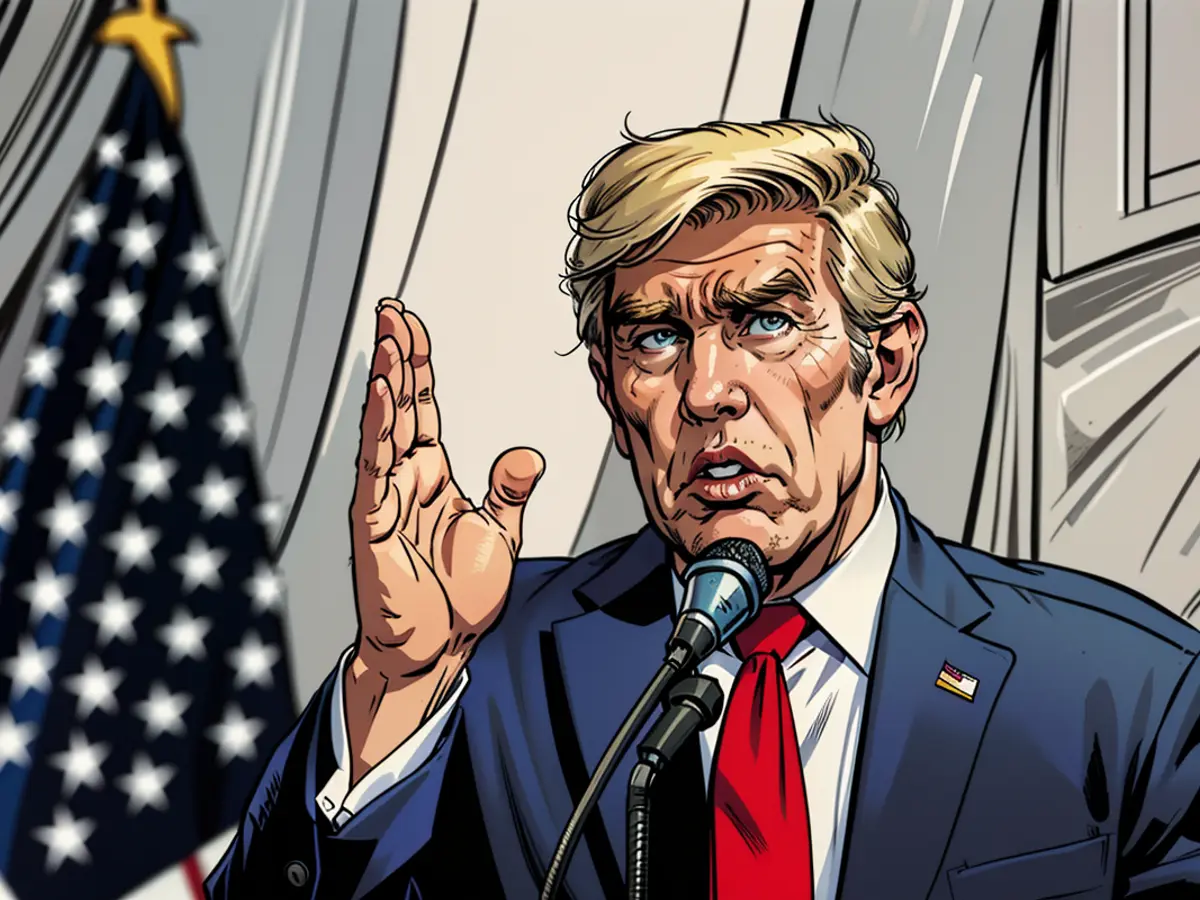What voters need to know about Trump’s economic policy proposals
Trump held two speeches this week centered on the economy and his policies, but he has yet to release a detailed economic plan.
On the campaign trail, the former president has largely focused his economic priorities on lowering taxes, increasing tariffs and lowering prices for consumers.
Trump repeatedly slams the Biden-Harris administration for high inflation and has pledged to bring down prices immediately. In reality, a president has few tools to address rising prices unilaterally. It’s the job of the Federal Reserve to set interest rates.
Here’s what we know so far about Trump’s economic plans:
Eliminate taxes on tips
Ending federal taxes on tips has become one of Trump’s favorite pledges at his campaign rallies.
He first floated the idea in June in Las Vegas, Nevada, a key swing state with many hospitality and service workers, but did not provide any details. Earlier this week, he suggested that he supported eliminating both federal income and payroll taxes on tips – a more financially substantial proposal.
“We’re looking at doing the full bore,” Trump said in an interview with Spectrum News 1 in North Carolina when asked if he supported eliminating both federal income and payroll taxes. Such a measure would require congressional approval.
Asked for clarity afterward, Trump’s national press secretary Karoline Leavittsaid she had nothing to add.
About 4 million people worked in tipped occupations in 2023, or about 2.5% of all employment, according to the Budget Lab at Yale University, a policy research center. But more than a third earn too little to owe federal income tax.
Federal payroll taxes fund Social Security and Medicare and total 15.3%, half of which is paid by employers.
Harris last week also promised to end federal income taxes on tips at a rally in Las Vegas, drawing the ire of Trump, who accused her of copying his idea. Tips would remain subject to payroll taxes under Harris’ plan.
If both federal income and payroll taxes were eliminated, it would lower revenue by $150 billion to $250 billion over a decade, according to the Committee for a Responsible Federal Budget. Just getting rid of federal income taxes on tips would lead to a loss of about half that size.
End taxes on Social Security benefits
Trump has also offered tax relief to another influential voting bloc – senior citizens. He announced late last month that he wants to end taxes on Social Security benefits.
“To help seniors on fixed incomes who are suffering the ravages of inflation, there will be no tax on Social Security. We’re going to stop it,” he said at a Wednesday rally billed as an economic speech.
Currently, seniors don’t owe taxes on their benefits if they earn less than $25,000 per individual, or $32,000 for married couples, of so-called combined income, which takes into account their adjusted gross income, half their Social Security benefits and nontaxable interest.
Above that threshold, they may have to pay income tax on up to 50% of their benefits, with the revenue going to the Social Security retirement trust fund. Those with combined incomes of at least $34,000 per individual, or $44,000 per couple, could pay income tax on up to an additional 35% of their benefits, with those funds going to Medicare’s hospital insurance trust fund, known as Medicare Part A.
Eliminating the levy on Social Security benefits would reduce taxes by an average of $550, though lower-income households would see little to no benefit next year, according to the Tax Policy Center.
However, the proposal would harm the popular entitlement program, as well as Medicare and the federal budget, according to the Committee for a Responsible Federal Budget. The tax is expected to bring in about $94 billion in revenue this year.
Eliminating the tax would increase federal deficits by between $1.6 trillion and $1.8 trillion through 2035, a committee analysis found. The Social Security retirement trust fund would be depleted more than a year earlier, and Medicare’s hospital insurance trust fund would run dry six years earlier.
Many seniors could ultimately be hurt if Social Security and Medicare’s trust funds run dry sooner and benefits have to be cut.
Trump has not specified how he would pay for the proposal.
Add more tariffs
Trump plans to implement new tariffs if he returns to the White House.
During speeches and interviews conducted earlier this spring, Trump called for adding a tariff of at least 10% on all imports from all countries, as well as another tariff upward of 60% on all Chinese imports.
Together, those tariffs could cost a typical middle-income household $1,700 a year, according to an estimate published by the Peterson Institute for International Economics in May.
This week, Trump suggested that the across-the-board tariff could be as high as 20%.
“We’re going to have 10 to 20% tariffs on foreign countries that have been ripping us off for years,” he said during a speech in North Carolina on Wednesday.
Trump has repeatedly claimed that new tariffs will bring back jobs and raise revenue for the country. But economists generally agree that tariffs are a costly way to boost some US manufacturers. In April, Moody’s estimated that even if Trump cushioned the blow from tariffs with tax cuts, his trade proposals would cost the US economy 675,000 jobs, worsen inflation and shrink gross domestic product by 0.6 percentage points.
Plus, tariffs are paid by US importers rather than foreign countries as Trump often suggests. Americans have paid more than $242 billion to date for tariffs that Trump imposed on imported solar panels, steel and aluminum, and Chinese-made goods during his administration, according to US Customs and Border Protection.
President Joe Biden has kept most of those tariffs in place and put a plan in place in May to raise tariffs on certain Chinese-made products, including steel and aluminum, legacy semiconductors and electric vehicles, over the next two years.
In March, Trump also suggested he would put a new 100% tariff on all cars made outside the US if he wins another term.
Reduce taxes for everyone
Trump has promised big tax cuts for people of all incomes, as well as for businesses.
He told a crowd of wealthy donors at a fundraising dinner in April that one of his core issues for a second term would be extending the sweeping array of tax cuts in the 2017 Tax Cuts and Jobs Act, one of the signature achievements of his first term. But the individual income and estate tax reductions expire at the end of next year.
“To get to economic relief to workers and families, we will make additional tax cuts,” he said in Wednesday’s speech. “That’s what gave us the great economy. We’ll make tax cuts additionally. We’ll make them permanent.”
The highest-income households would receive more than 45% of the benefits if the expiring provisions of the TCJA are extended, according to an analysis by the Urban-Brookings Tax Policy Center.
Extending the provisions would have a big impact on the national debt, raising it by more than $4 trillion over the next 10 years – before interest costs are factored in, according to the Congressional Budget Office.
In addition, Trump would like to lower the corporate tax rate to 15% from the 21% set by the TCJA – though he acknowledged in an interview last month with Bloomberg Businessweek that reducing it that much would be hard. Most of the corporate tax cuts in the law are permanent.
Cutting prices
During Trump’s economic speech on Wednesday, he said he plans to sign an executive order on his first day back in the Oval Office directing all agency heads and Cabinet secretaries to “use every tool and authority at their disposal to defeat inflation and to bring consumer prices rapidly down.”
“You just watch. They’ll come down, and they’ll come down fast,” he said.
One of his strategies to bring down prices, he said, is to “eliminate every single costly job-killing regulation.” But he didn’t provide specifics during his speech.
Trump has also has repeatedly said he will bring down prices by boosting oil and gas production. But prices at the pump in the US are highly dependent on the global oil market and impacted by things out of the president’s control, like Russia’s war on Ukraine or OPEC’s recent decisions to cut oil production. Plus, US oil production has reached record levels under Biden.
“We’re going to drill, baby, drill. That’s going to bring down prices of everything,” he said on Thursday.
Inflation has already slowed after reaching about 9% in 2022. The Consumer Price Index recently fell to below 3%, paving the way for the Federal Reserve to cut rates next month.
CNN’s Ella Nilsen contributed to this report.
In his economic plans, Trump has pledged to end federal income taxes on Social Security benefits, just like Harris did recently, which has sparked some criticism from the former president.
Ending taxes on tips has also become one of Trump's key campaign promises, with the former president suggesting he supports eliminating both federal income and payroll taxes on tips at a North Carolina rally. However, such a measure would require congressional approval.








